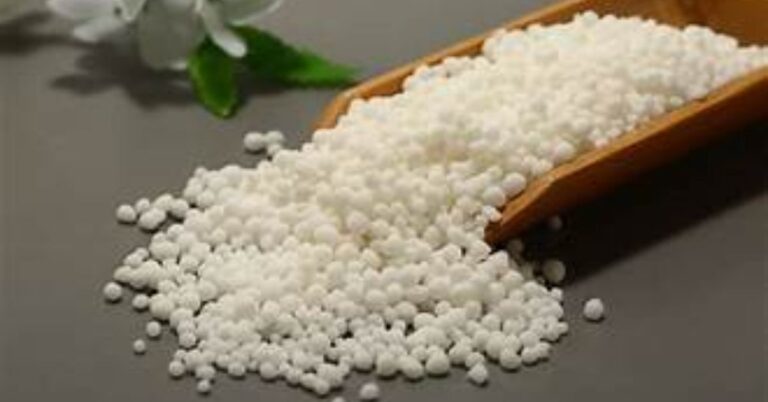Calcium ammonium nitrate (CAN) is a vital fertilizer used worldwide to enhance soil productivity and crop yield. While its benefits to agriculture are undeniable, CAN demands careful handling and storage due to its chemical nature. Improper management can lead to accidents, environmental hazards, and legal complications. This comprehensive guide covers everything you need to know about safely handling and storing calcium ammonium nitrate to protect your employees, the environment, and your investments.
Understanding Calcium Ammonium Nitrate
What is Calcium Ammonium Nitrate?
Calcium ammonium nitrate is a nitrogen-based fertilizer composed of ammonium nitrate mixed with limestone or calcium carbonate. This blend helps reduce the explosive potential of ammonium nitrate while still delivering high nitrogen content to plants. CAN is widely used in agriculture due to its ability to nourish crops, improve soil structure, and boost yields.
Chemical Properties
CAN is a hygroscopic compound, meaning it readily absorbs moisture from the air. This characteristic can cause clumping and make it difficult to handle if not stored properly. Additionally, CAN is classified as an oxidizer, which can intensify fires if it comes into contact with combustible materials. Understanding these properties is crucial for safe handling and storage.
Importance of Safety in Handling CAN
Improper handling of calcium ammonium nitrate can pose significant risks. It is essential to prioritize safety to prevent accidents, protect workers, and comply with regulatory standards. The risks include:
- Fire Hazards: CAN can accelerate fires due to its oxidizing properties.
- Environmental Impact: Spills or leaks can contaminate soil and water sources.
- Health Risks: Direct exposure can irritate the skin, eyes, and respiratory system.
By implementing strict safety protocols, these risks can be mitigated effectively.
Guidelines for Safe Handling
Training and Education
All personnel involved in handling CAN should receive comprehensive training. Workers must understand the risks, proper handling techniques, and emergency procedures. Regular refresher courses should be conducted to ensure compliance with safety standards.
Use of Personal Protective Equipment (PPE)
Always use appropriate PPE, including gloves, goggles, and dust masks, when handling CAN. This protects against skin irritation, respiratory issues, and accidental ingestion. Ensure that PPE is readily available and in good condition.
Avoid Mixing with Incompatible Substances
Calcium ammonium nitrate should never be mixed with flammable or combustible materials such as fuel, organic matter, or powdered metals. This can create a highly volatile reaction. Store and handle CAN separately from these substances to minimize risk.
4. Maintain Clean Work Areas
Ensure that all tools and equipment used for handling CAN are clean and free from contaminants. Remove any combustible residues or oils from handling equipment to prevent reactions.
Best Practices for Storage
Choose the Right Storage Location
Select a dry, well-ventilated storage area away from heat sources, sunlight, and flammable materials. The storage facility should be constructed with non-combustible materials and equipped with adequate fire suppression systems.
Control Moisture Levels
Since CAN is hygroscopic, it is vital to keep moisture out of storage areas. Use airtight containers or moisture-proof packaging to prevent clumping and degradation of the product. Dehumidifiers can also be installed in storage facilities to regulate humidity levels.
Stack Bags Properly
When storing CAN in bags, stack them on pallets to avoid direct contact with the floor. Keep the stacks stable and ensure there is adequate spacing between them for air circulation. This minimizes the risk of heat buildup and makes inspection easier.
Regular Inspection and Maintenance
Conduct regular inspections of the storage facility to identify any signs of damage, leaks, or contamination. Immediate action should be taken to address any issues. Additionally, ensure that fire extinguishers and safety equipment are in good working order.
Emergency Preparedness
Develop an Emergency Response Plan
Every facility handling CAN must have a detailed emergency response plan. This plan should include steps to handle fires, spills, and accidental exposure. Conduct regular drills to ensure all employees are familiar with the procedures.
Fire Prevention and Control
Install fire detection and suppression systems in storage areas. Use extinguishers suitable for chemical fires and ensure they are easily accessible. Train staff on how to operate the equipment safely during emergencies.
Spill Containment Measures
In case of a spill, immediately isolate the affected area and prevent the material from spreading. Use appropriate absorbent materials to clean up the spill and dispose of the waste following local environmental regulations.
Legal and Regulatory Compliance
Understanding Local Regulations
Governments worldwide have strict regulations regarding the handling and storage of calcium ammonium nitrate due to its potential risks. Familiarize yourself with the laws in your region and ensure full compliance. This may include obtaining permits, maintaining records, and adhering to specific storage guidelines.
Regular Audits and Inspections
Schedule regular audits to evaluate safety practices and ensure they meet regulatory standards. Inspections by certified professionals can help identify and address potential hazards before they escalate.
Environmental Considerations
Minimizing Environmental Impact
To protect the environment, store CAN in areas designed to contain spills and prevent runoff. Use sealed containers and ensure proper disposal of any unused or contaminated material.
Safe Disposal Practices
Never dispose of calcium ammonium nitrate by dumping it into the soil or water. Work with certified waste disposal companies to handle unused or expired product responsibly.
Conclusion
Safe handling and storage of calcium ammonium nitrate are essential to prevent accidents, protect the environment, and ensure the efficient use of this valuable fertilizer. By implementing proper training, adhering to safety protocols, and maintaining a secure storage environment, you can minimize risks and maximize the benefits of CAN. Whether you are a small-scale farmer or a large agricultural enterprise, these practices are vital for sustainable operations.

